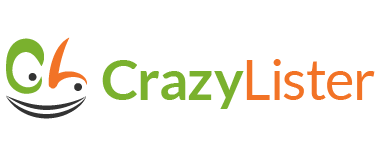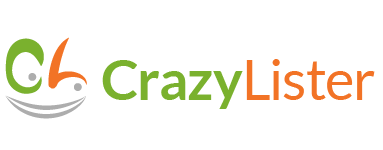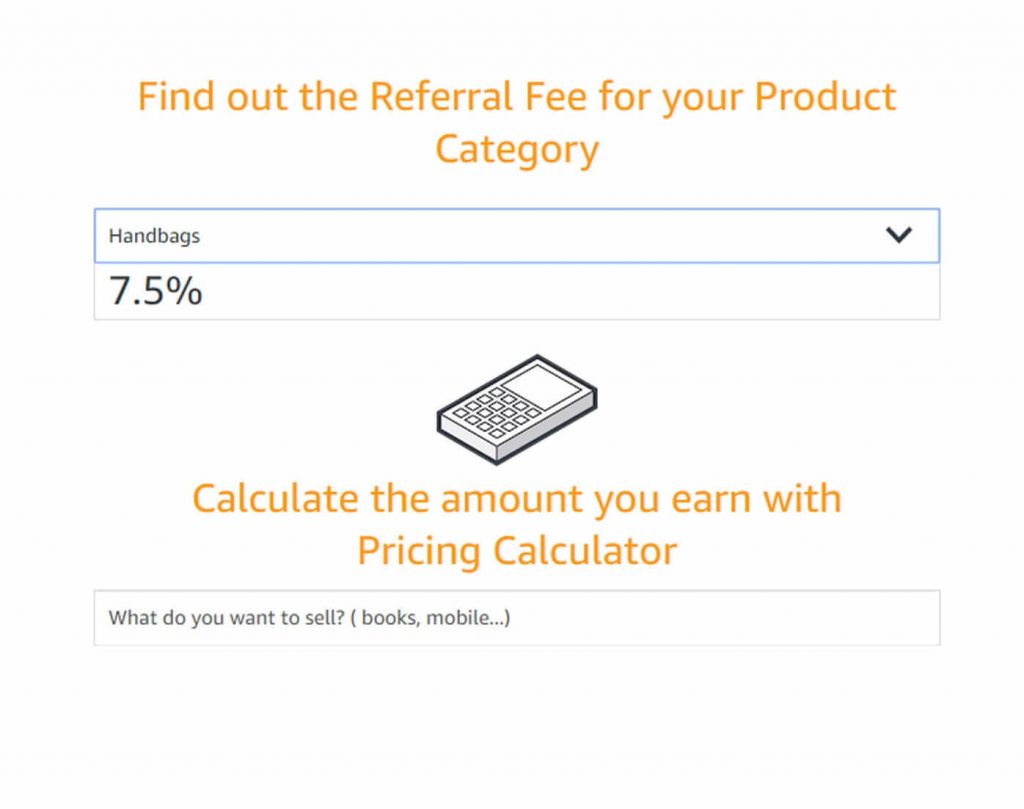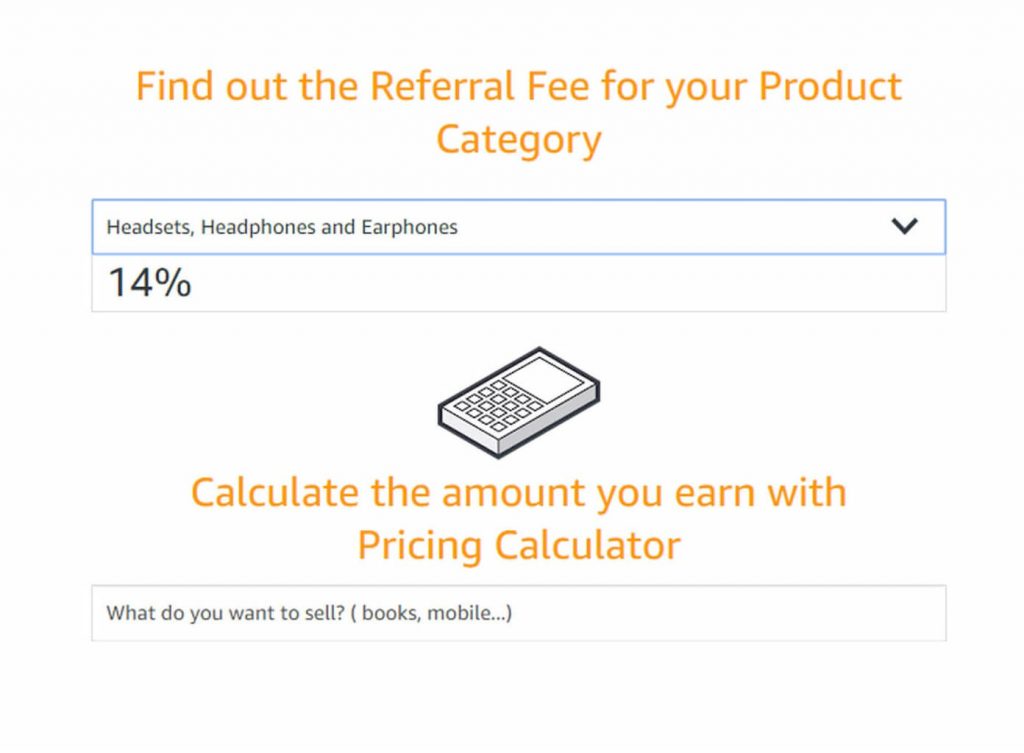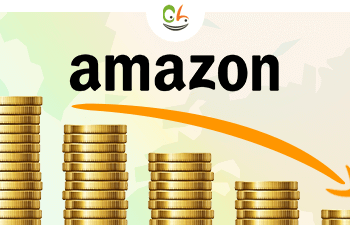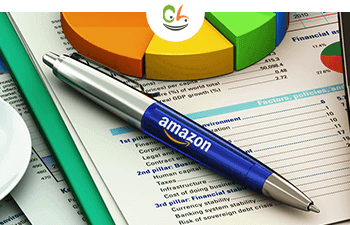In this post I will explain all Amazon seller fees from A to Z. I will map out all the fees providing you with a clear picture which will allow you to plan your Amazon business and ensure that you stay profitable.
The fees which currently exist for sellers on Amazon can be divided into three main groups:
- Fees pertaining to sales (Amazon sales fees)
- Seller account fees
- FBA – Fulfillment By Amazon fees and shipping costs
Amazon Sales Fees
Regardless of your seller account status ie Individual or Professional (more on this later), every sale that you generate on Amazon is subject to Amazon sales fees which vary depending on price and item category (and by the dimensions and weight of the item of you doing FBA):
Referral fees
This fee is anywhere from 6-20% of the sale price of your item though on average sellers pay around 15%. This fee is dictated by two factors:
- Sale price
- Product category
Using Amazon’s Referral Fee calculator you are able to determine what percentage you will pay on each item you sell.
For example, if you are selling in the ‘handbags’ category you are looking a a 7.5% Referral Fee:
On the other hand if you are selling headphones, you are looking at a 14% Referral Fee:
As you can see, referral fees vary drastically and it is very important to know what percentage of your listing price is being payed to Amazon. Pay close attention to this as well as other factors in order to reduce Amazon fees.
{h4} Minimum Referral Fees
This fee is applied only to specific categories and ranges from $0-2. If your category has a minimum referral fee you will either pay the minimum referral fee or the referral fee itself (a percentage of the product) but not both.
Let me give you an example:
say you are selling a t-shirt for $100 and the referral fee is 19.5% because you fall into the ‘Apparel’ category. This means the referral fee is $19.5 but the minimum referral fee is say $2 – since the referral fee is greater than the minimum fee, you only pay the referral fee and do not pay the minimum fee. On the other hand if your t-shirt was selling for $5 meaning the referral fee comes out to $1 then you would not pay the referral fee rather you would pay the minimum fee of $2 since this is the greater amount.
Variable Closing Fees
This fee is a flat fee of between $1.35 and $1.80 on products which Amazon deems ‘media’. This fee is in addition to the referral or minimum referral fees you need to pay. The VCF product list includes:
- Videos
- Music
- Books
- DVDs
- Software/ Video games
- Consoles
Amazon Seller Account Fees
The two options you have on Amazon is to:
- Sell as an Individual
- Sell as a Professional
Selling as an individual means that every time you sell a product you will need to pay $0.99 fee on each product but no monthly fee.
Selling as a Professional means that you pay $39.99 a month but you do not pay Amazon per product per sale.
Logic dictates that if you are selling more than 40 products a month it is worth your while to sign up for a Pro account as the more products you sell, the less it will cost per product. I can easily demonstrate this : if you sell 42 products and are paying $40 a month then 40 divided by 42 is $0.95 per product. But if you are selling 60 products then 60 divided by 40 is $0.66 per product.
Differences between individual and professional account
The Individual account is very limited and does not include many features and perks that the Pro account offers:
| Individual Account: | Pro Account: |
| Ability to sell up to 40 products a month | Unlimited amount of sales and listings |
| Can’t run promotions | Able to run promotions |
| Selling restricted to one Amazon site | Can sell on multiple Amazon sites |
| List products individually | Bulk product upload feature |
| Limited amount of categories to sell in | Almost Unlimited amount of categories to sell in |
| No inventory management features | Inventory management and integration features available |
| Pay $0.99 per product per sale | Pay $39.99 a month no matter the quantity |
| Excluded from Buy Box | Access to Buy Box |
If you are an amateur seller or just starting out then definitely go for the Individual account but if you are a seasoned e-commerce business person and deal with high quantities of merchandise the pro account is for you.
Shipping And Fulfillment By Amazon (FBA) Fees
If you plan on shipping out products yourself then this can be considered a ‘fee’ albeit not one you pay to Amazon. But this is actually not so much a fee as an expense and a credit. The expense is you have to pay UPS or The US Postal Service to mail your products. But on the bright side, Amazon provides ‘Shipping Credits’ based on the weight and dimensions of your item. When it comes to lighter/smaller items sometimes people come out on top (with a small profit) from these shipping credits but on larger items the credits don’t always cover the entire cost and the merchant is forced to swallow the remaining shipping costs. In order to understand these Shipping credits have a look at this chart from Amazon:
What is Fulfillment By Amazon ?
For those of you who have not yet heard of this or simply don’t fully understand, Fulfillment By Amazon otherwise known as FBA is a service Amazon provides its sellers. Essentially, sellers send in their products to an amazon storage and distribution center close to their main customer base, say Texas for example. Amazon will store your item until it is purchased at which point they will send off the item to your future Texas based customer.
It is important to note that Texas is just one example as Amazon has many distribution centers around the world covering the vast majority of locations relatively quickly. Amazon is known for their logistics capabilities and created a new standard in eCommerce when it comes to delivery times.
But in terms of defining what Fulfilment By Amazon is, the bottom line is that FBA is a storage and distribution service provided by Amazon to sellers.
What are the pros and cons of Fulfillment By Amazon ?
The pros include:
- Convenience – Amazon will take care of all the shipping and storing logistics which will free you up to source your items and grow your business
- Multi-channel – FBA is not a service which is exclusively meant for Amazon, online merchants can use this service for their Shopify or personal web stores for example as well
- Consumer confidence – Offering your item to consumers under the FBA umbrella provides your shoppers with a sense of trust and confidence that their items will be shipped in a timely and professional fashion
- Prime Shipping – Your product will be offered under ‘Prime Shipping’ meaning a consumer who is signed up for Prime can get your item within one business day
- Search result placement – Amazon’s algorithm favours FBA users meaning by being a part of this program you will appear higher in search results on Amazon and may sell a higher quantity of products as a result
- Customer support – Amazon provides volume customers with customer support 24 hours a day and deals with the logistics of returns
- Higher selling price and volume – Once an item is fulfilled by Amazon, you can sell it at a higher price. Buyers love the Prime service and will pay more for it. You will also be selling more items compared to self-fulfillment.
The cons include:
- High costs – Amazon charges $35 a month as a base fee for having an Amazon seller account and roughly 30% of each product’s value in addition. This percentage is based on how long the item sits in Amazon’s storage facility and based on the item’s dimensions – I will discuss this in depth later on in this post.
- Prep time – Items have to be prepared and packaged according to Amazon standards otherwise Amazon will do the work for you at an additional fee
- Delays – During extremely busy seasons such as holidays, due to the high volume Amazon deals with, you may experience delays which can temporarily result in an item of yours being out of stock despite you having sent in more merchandise which has yet to be processed
- Branding – When using FBA you may lose out on a big branding opportunities when it comes to the shipping boxes and labels – all boxes are marked with Amazon logos. If you feel like this is a big part of how you communicate your brand and foster a relationship with your customers FBA may not be for you
- No customer email list – When using FBA Amazon does not allow you to build an email list of previous customers in order to maintain a relationship and remarket to them – this can be a serious deterrent for some folks
What are the fees associated with Fulfillment By Amazon ?
FBA fees are divided into two main categories:
- Fulfillment Fees – This fee is charged per unit and includes :
- Packing
- Shipping and handling
- Customer service
- Product returns – This too is divided into two categories, each with four subcategories:
- Standard-size:
- Small (1 lb. or less) – $2.41
- Large (1 lb. or less) – $3.19
- Large (1 to 2 lb.) – $4.71
- Large (over 2 lb.) – $4.71, add $0.38 for every pound above 2 lb.
- Oversized :
- Small oversized (1 lb. or less) – $8.13$137.32, add $0.38 for every pound above 2 lb.
- Medium oversized (1 lb. or less) – $9.44$137.32, add $0.38 for every pound above 2 lb.
- Large oversized (1 to 2 lb.) – $73.18$137.32, add $0.79 for every pound above 90 lb.
- Special oversized (over 2 lb.) – $137.32, add $0.91 for every pound above 90 lb.
- Standard-size:
- Monthly inventory storage fees – is charged per cubic foot for all units being stored at an Amazon fulfillment center based on the month and the volume of your product moving through the facility. This too is divided into two categories each with two subcategories:
- Standard-size:
- January – September – $ 0.64 per cubic foot
- October – December – $2.35 per cubic foot
- Oversized:
- January – September – $ 0.43 per cubic foot
- October – December – $1.15 per cubic foot
- Standard-size:
Amazon has provided three product examples so that sellers can get a good idea of how the calculation works:
FBA fees can be daunting to figure out and that is why it is recommended to use the Amazon FBA calculator in order to determine your profit margins and be 100% certain that FBA if the right business choice for you.
Amazon Seller Fees – Summing it up
Today I summarized all of the different Amazon seller fees in order to make it easier to plan your Amazon based e-commerce business. Just remember that the main Amazon fees are:
- Referral Fees – 6-20% of a product’s value charged on a category basis
- Minimum Referral Fees – $0-2 charged on select product categories only when lower than the Referral fee
- Variable Closing Fees charged on ‘media’ products and ranges from $1.35-1.80
- Selling fees be they monthly ($40) for the Pro account or per product ($0.99) for the Individual account
- Shipping fees which is a seller responsibility but is partially covered via Amazon Shipping Credits
- Fulfillment fees based on weight and product dimensions
- Monthly inventory storage fees based on the time of year (high or low season) as well as product dimensions
Any comments below regarding Amazon seller fees and your personal experiences that can be helpful to the seller community would be much appreciated 🙂

